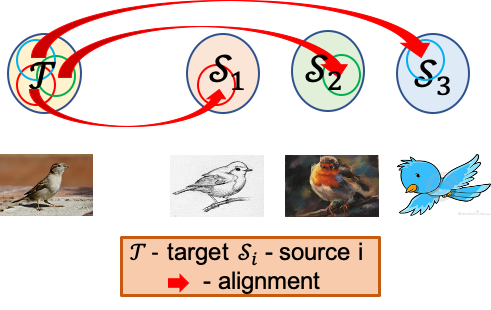Dynamic Transfer for Multi-Source Domain Adaptation
Yinpeng Chen2
Lu Yuan2
UC San Diego1, Microsoft2

Overview
Recent works of multi-source domain adaptation focus on learning a domain-agnostic model, of which the parameters are static. However, such a static model is difficult to handle conflicts across multiple domains, and suffers from a performance degradation in both source domains and target domain. In this project, we present dynamic transfer to address domain conflicts, where the model parameters are adapted to samples. The key insight is that adapting model across domains is achieved via adapting model across samples. Thus, it breaks down source domain barriers and turns multi-source domains into a single-source domain. This also simplifies the alignment between source and target domains, as it only requires the target domain to be aligned with any part of the union of source domains. Furthermore, we find dynamic transfer can be simply modeled by aggregating residual matrices and a static convolution matrix. Experimental results show that, without using domain labels, our dynamic transfer outperforms the state-of-the-art method by more than 3% on the large multi-source domain adaptation datasets -- DomainNet.

